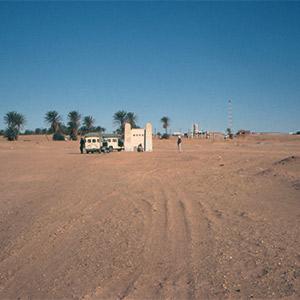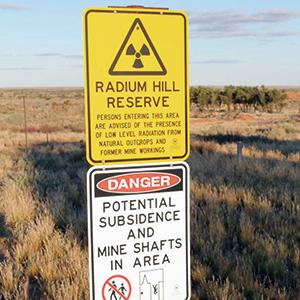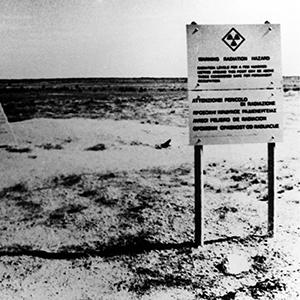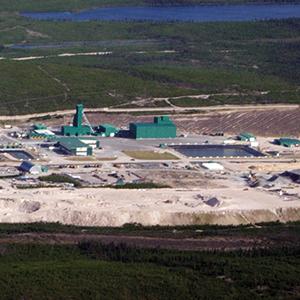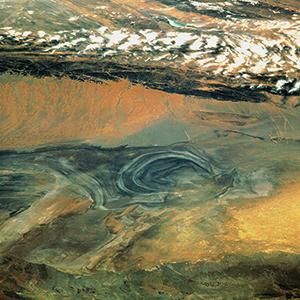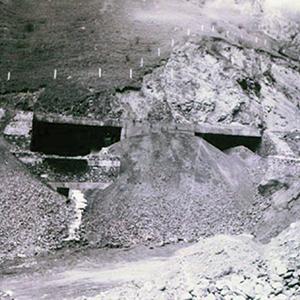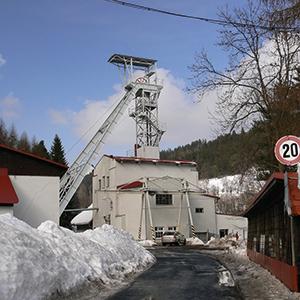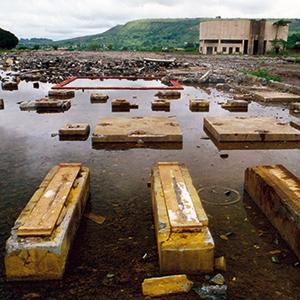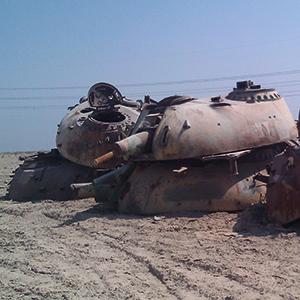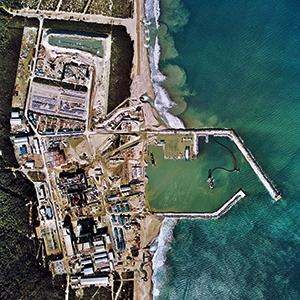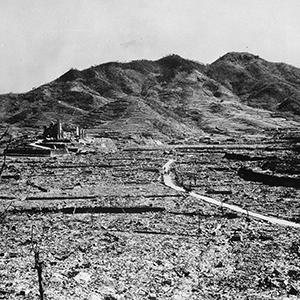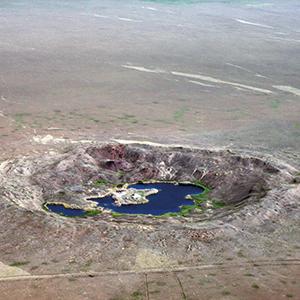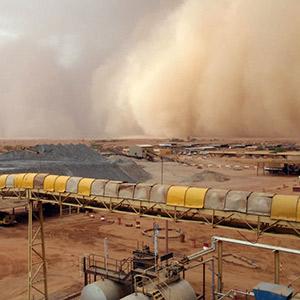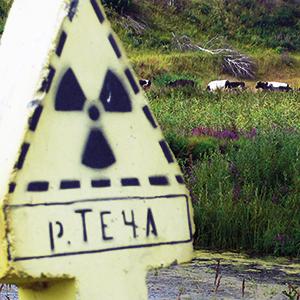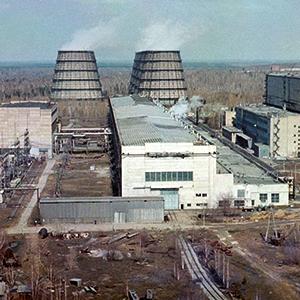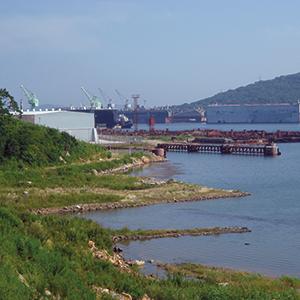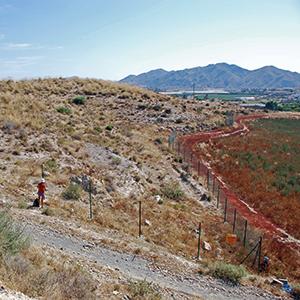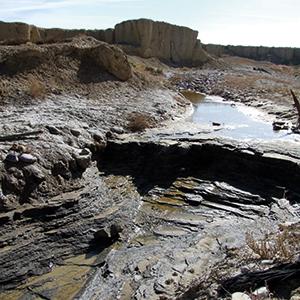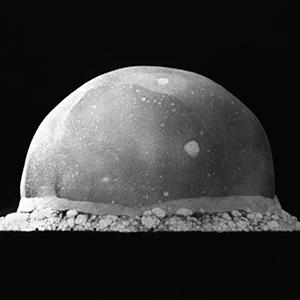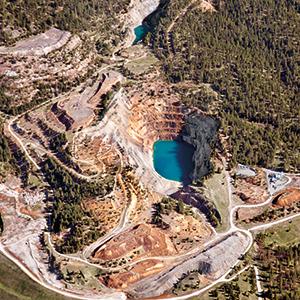Fallujah, Iraq
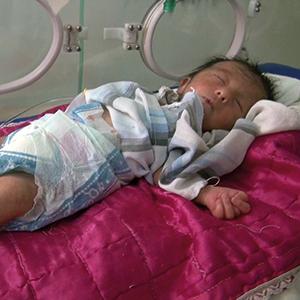
The use of depleted uranium in the war on Iraq in 2003 has led to exposure of the local population to radioactive uranium dust. This could potentially explain the significant rise in cancer and congenital malformations documented in Fallujah after 2003. In addition, soldiers who were in contact with the radioactive ammunition also have increased morbidity rates.
Photo: A girl in the neonatal unit of Fallujah’s children’s hospital, who was born with a congenital heart defect and malformations of the extremities. In 2010, a study found malformations in 14.7% of all children born in Fallujah. © Donna Mulhearn
History
Depleted uranium (DU) is mostly composed of the isotope uranium-238 and is a by-product of the enrichment process used to manufacture reactor- or weapon-grade enriched uranium. Ammunition containing DU was used in both U.S.-Iraq wars, in 1991 and 2003. It is estimated that between 1,000 and 2,000 tons of DU were used during the invasion of Iraq in 2003, with the smallest bullets containing 300 grams and the largest bunker buster bombs containing up to seven tons of DU.
Other countries, besides the U.S. and the UK, are suspected of using DU ammunition. Since it is essentially radioactive waste, DU is widely available in countries with nuclear programs. Due to its high density it has the ability to pierce the armored walls of tanks. It ignites upon impact, burning up the insides of vehicles after penetration. Uranium oxide particles are spread as radioactive dust by the resulting fires. They can be dispersed over large areas and have a physical half-life of about 4.5 billion years.
After the 2003 war, many tanks that were hit by DU ammunition were left standing outside of cities like Fallujah. While the British Ministry of Defense advises its soldiers to wear respirator masks when entering areas where DU might have been used, no such warnings were given to the Iraqi public.
Health and environmental effects
Pulverized uranium oxide can enter the body through inhalation, ingestion or shrapnel wounds. Once dissolved in the blood, some of the DU will be excreted through the kidneys, where it causes chemical damage, while some of it will remain in the body, especially in the bones, where it continually irradiates surrounding tissue.
While uranium is primarily a source of alpha-radiation, its decay products can also cause beta- and gamma-radiation. By causing mutation of the DNA, internal irradiation can lead to cancer and malformations. Animal studies have confirmed that DU is spread to multiple organs in the body and induces transgenerational genomic damage.
After the invasion of Iraq in 2003, tank graveyards were used as playgrounds by local children or were pilfered for valuables, scrap metal or souvenirs so that many people have come into contact with radioactive dust even long after actual combat. A few years later, the incidence of congenital malformations and cancer rose near places where DU ammunition had been used.
A survey performed in Fallujah in 2010 found that the overall cancer rate in the time after the 2003 war had increased four-fold compared to standard rates in the Jordanian or the Middle Eastern Cancer Registries. Childhood cancer had increased 12-fold, while leukemia rates had increased 38-fold. Another survey performed in 2010 found that 14.7 % of all babies born in Fallujah had birth defects. A follow-up study found significantly higher uranium levels in the hair of mothers of children diagnosed with congenital anomalies than in control populations (0.18 ppm vs. 0.04 ppm).
Outlook
The full extent of the use of DU ammunition in warfare is only slowly being understood. Without knowing where and how much of this dangerous substance was used, proper protection of the population through information, evacuation and decontamination is almost impossible. The countries using DU ammunition need to inform local authorities and the affected population quickly and comprehensively.
Other affected populations include the inhabitants of Kosovo and Serbia, where DU ammunition was used in the 1999 war, as well as all soldiers exposed to DU ammunition. According to the British Royal Society, soldiers might suffer kidney damage and increased risk of lung cancer if they inhaled DU. The population of Fallujah and the U.S. and UK veterans – they all are Hibakusha, because their health has been compromised by waste products of the nuclear chain.
References
- Brown P. “Gulf troops face tests for cancer.” The Guardian, April 25, 2003. www.guardian.co.uk/uk/2003/apr/25/internationaleducationnews.armstrade
- Hindin et al. “Teratogenicity of depleted uranium aerosols: A review from an epidemiological perspective.” Environ. Health, 4:17, 2005. www.ehjournal.net/content/4/1/17
- Briner WE. “The evolution of depleted uranium as an environmental risk factor.” Int J Environ Res Public Health. 2006 Jun;3(2):129-35. www.ncbi.nlm.nih.gov/pubmed/16823086
- Miller et al. “A review of depleted uranium biological effects: in vitro and in vivo studies.” U.S. Armed Forces Radiobiology Research Institute. Rev Environ Health. 2007 Jan-Mar;22(1):75-89 . www.ncbi.nlm.nih.gov/pubmed/17508699
- Busby et al. “Cancer, infant mortality and birth sex-ratio in Fallujah, Iraq 2005-2009.” Int J Environ Res Public Health 2010;7:2828-37. www.mdpi.com/1660-4601/7/7/2828
- Manduca et al. “High Prevalence Data and Increase in Time of Birth Defects in Fallujah, Iraq: Historical Reproductive Life and Hair Metal Load in Newborns and Children with Birth Defects and Their Families.” Newweapons Committee, 2010. www.uruknet.info/?p=76241
- Alaani et al. “Uranium and other contaminants in hair from the parents of children with congenital anomalies in Fallujah, Iraq.” Confl Health 2011;5:15. www.ncbi.nlm.nih.gov/pmc/articles/PMC3177876/







